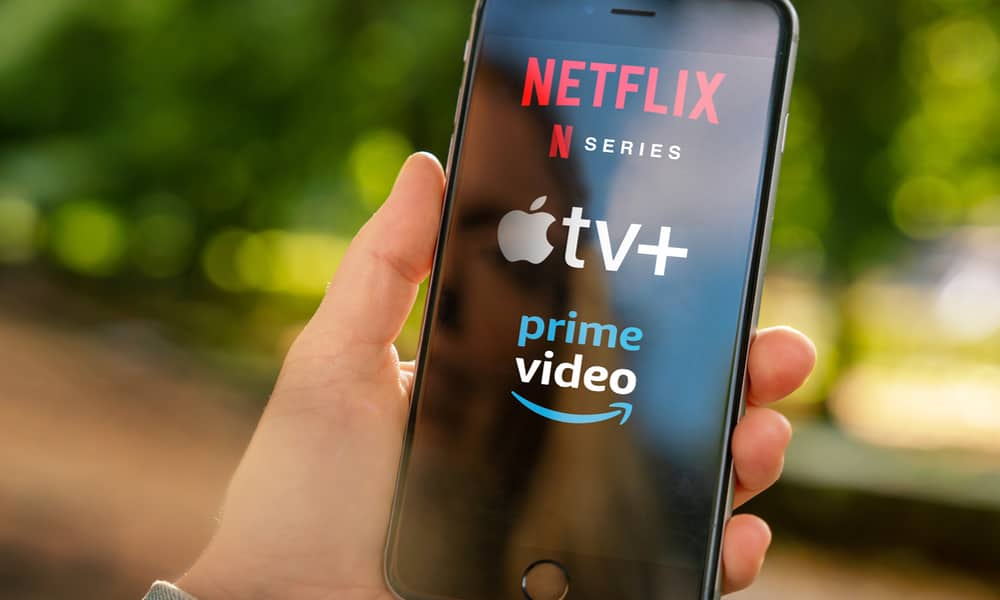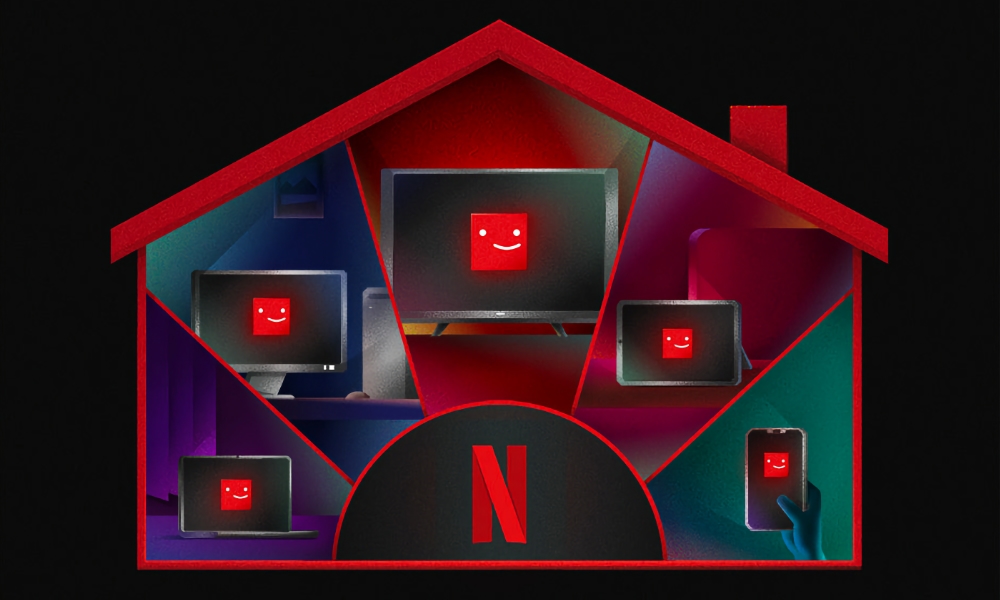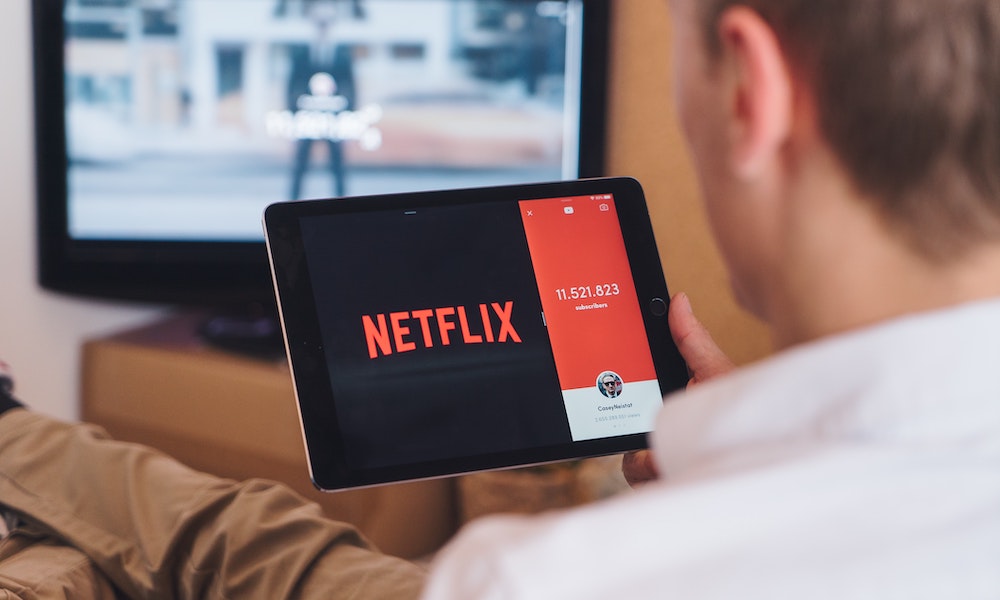More People Are Now ‘Cutting the Cord’ On Streaming Services
 Credit: Audio und werbung / Shutterstock
Credit: Audio und werbung / Shutterstock
Toggle Dark Mode
The halcyon days of “cutting the cord” to get away from complicated cable services by moving to streaming platforms like Netflix are starting to seem quaint as more and more folks find themselves victims of subscription fatigue.
While Netflix once promised to be a one-stop shopping destination for all of your favorite shows and movies, it didn’t take long for the big broadcasters and Hollywood studios to decide they could fetch a bigger piece of the pie — and a larger share of your wallet — by spinning up their own independent streaming services.
Now, we’re left in a world where the average person finds themselves faced with just as many complicated and confusing options to catch their favorite shows as they once did with “Big Cable” — and that gets even worse when you factor in news and sports.
So, it probably shouldn’t come as a big surprise that folks are now “cutting the cord” on streaming services in the same way they once did on their cable subscriptions.
A new report in The Wall Street Journal (Apple News+) highlights how even the most prominent streaming giants like Netflix are having difficulty holding on to their customers.
While many folks once considered a Netflix subscription a regular expense in their household budget, consumers are being much more choosey about their services — and it doesn’t help that prices are skyrocketing and sharing is no longer caring.
While the recent Netflix password crackdown resulted in six million new subscribers, some of those gains may have been short-lived. The latest WSJ report indicates that “defections across premium streaming services” are rising — up to 6.3% this past November, up from 5.1% at the same time in the year before.
Citing data from subscription-analytics provider Antenna — the same source that reported record Netflix sign-ups in June, the WSJ notes that around 25% of US subscribers to “major streaming services” have dropped at least three from their selection over the past two years. That’s a significant jump from two years ago and suggests that “streaming users are becoming increasingly fickle.”
The WSJ defines “major streaming services” as including Apple TV+, Discovery+, Disney+, Hulu, Max, Netflix, Paramount+, Peacock, and Starz.
While the rising costs of the streaming services plus inflation are a factor here, it’s also telling that at least some customers are considering returning to cable instead, as it provides a simpler way to manage their home entertainment needs by combining more things under a single umbrella — and a single bill.
This is one area where tactics such as ad-supported plans aren’t necessarily helping. While these plans may be cheaper, those who cut the cord to avoid ads in the first place won’t necessarily be lured back by these more affordable packages — some feel they might as well go back to cable instead.
Such is the case with Crystal Revis, a mother of six from Lynn Haven, Florida, whom the WSJ spoke with, who recently canceled her Disney+ and Paramount+ subscriptions and is considering leaving Netflix and Hulu too. Revis ultimately kept Hulu, but only because it offered her a “loyalty” deal of $2.99/month for six months of its ad-supported tier.
With the streaming services increasing their rates like they are, it’s, like, ‘OK, do I pay for the cable?’
Crystal Revis, in an interview with The Wall Street Journal
Others have dropped to lower tiers to control costs, with many abandoning pricier packages like Netflix’s $22.99 Premium tier to live with lower resolutions and fewer screens. The password-sharing crackdown has also probably driven some downgrades since fewer screens are required once you’re the only one using your Netflix subscription.
Not all of these defections from streaming services are permanent, though. According to Antenna, one in four customers who cancel a premium service return to it within four months, and one in three does so in seven months. Some of this may be a change of heart, but many subscribers are now managing their streaming packages seasonally — one advantage of these services over traditional cable that still applies.
For example, users might sign up for Apple TV+, Disney+, Paramount+, or even Netflix to binge-watch a new series, subsequently canceling it but fully planning to re-up their subscription once the next season appears. This helps to manage costs by not continuing to pay for something they’re not regularly using, and it’s easy to do since few streaming services offer any incentives for longer-term commitments.
Amazon Prime Video and Apple TV+ both have an edge here since their streaming services don’t necessarily stand on their own. While Apple TV+ and Amazon Prime Video are available as individual subscriptions, they can retain subscribers through Apple One bundles and Amazon Prime.
For instance, even when there’s nothing interesting on Apple TV+, Apple One offers enough other benefits to justify keeping it around for Apple Music, iCloud storage, and Apple Arcade. Apple One Premier subscribers also gain Apple Fitness+ and Apple News+ and an even more generous amount of iCloud storage.
Along the same lines, Amazon Prime offers so many additional benefits that many folks consider Prime Video to be little more than a bonus. Amazon plans to launch ads on its standard tier later this month, with a $3 charge for an ad-free experience, so that dynamic may shift slightly, but it’s probably not concerned about folks dropping their Prime subscriptions in droves.
Other companies also offer bundled packages, but often only as a combination of multiple streaming services. For example, Disney+ subscribers can opt for a package that includes ESPN+ and Hulu, while Paramount+ has picked up Showtime — and may soon even combine forces with Apple TV+.









